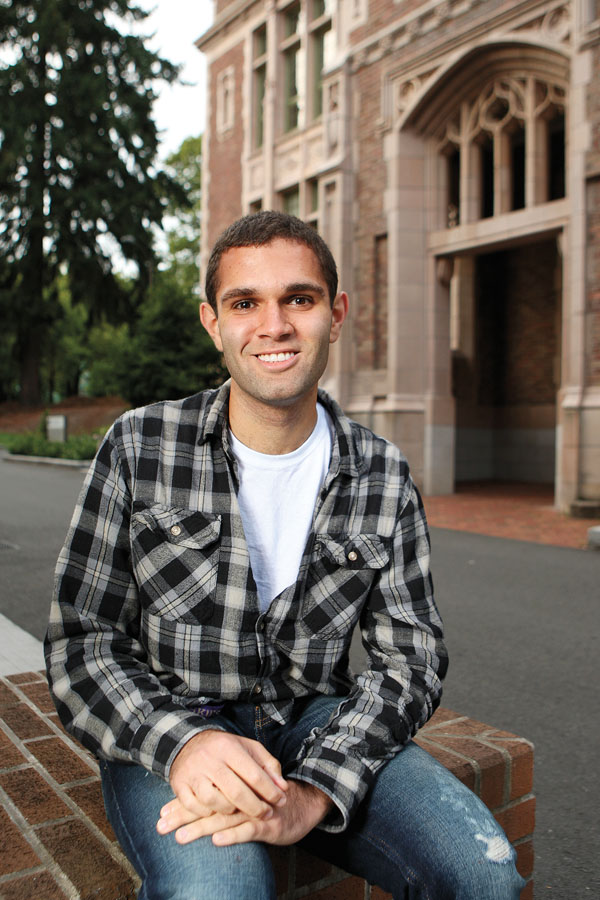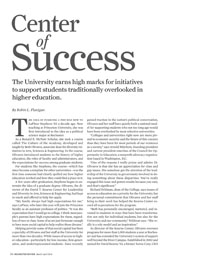Features: Center of Success
 KEARNS SCHOLAR: With the guidance of Kearns Center staff, Nicholas undertook research on mercury’s effects on child development, leading to his graduate school interests. (Photo: Kevin P. Casey/AP Images for Rochester Review)
KEARNS SCHOLAR: With the guidance of Kearns Center staff, Nicholas undertook research on mercury’s effects on child development, leading to his graduate school interests. (Photo: Kevin P. Casey/AP Images for Rochester Review)Tyler Nicholas ’12 opened himself to new career possibilities after hearing Kearns Center alumni talk about their graduate school experiences.
“They made me realize what I wanted to do after graduation, and that was to go to graduate school instead of medical school, which was my original plan,” says Nicholas, who became a Kearns Scholar as a sophomore and a McNair Scholar as a junior. “The Kearns Center helped me figure out what I was interested in, and how to tailor my education to that.”
Interested in environmental health after a class in epidemiology, Nicholas received help finding a yearlong research position in a toxicology lab at the Medical Center’s Department of Environmental Medicine. He landed a subsequent research position in the department’s exposure assessment lab.
Stressed out while applying to graduate school, Nicholas often retreated to the Kearns Center, where “there was always food and someone to talk to about anything.”
Prompted by staff members, he presented research on the effect of mercury on child development at two conferences as a senior.
“I didn’t realize at the time how important it was to have that experience,” he says.
With a degree in environmental science, Nicholas is now pursuing a master’s degree in environmental health at the University of Washington’s School of Public Health, with the intention of earning a PhD in environmental and occupational health and, eventually, getting a job as an industrial hygienist. He hopes to focus on the growing nanotechnology industry.
“I never would’ve ended up in research if it weren’t for the Kearns Center,” he says. “Now I actually get to see the results of my research take form and potentially improve thousands of lives. It’s pretty astounding.”

